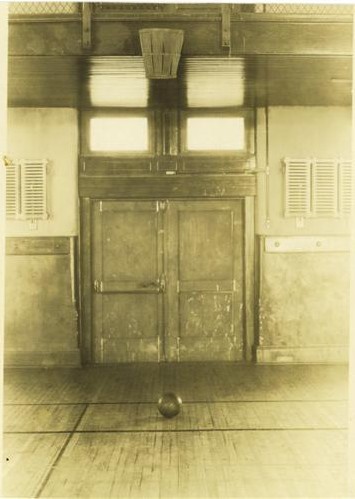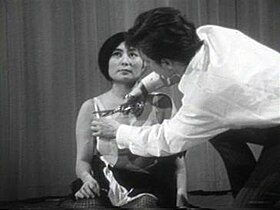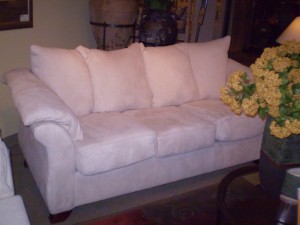When discussing play and art, I was reminded of this piece I was challenged to write four years ago for the art journal Art Lies. The theme of the edition, guest-edited by the curator Stuart Horodner, was “second acts” — the myriad other things cultural producers do to the side of their practices, and Stuart asked me to write about playing roller derby.
Although that sport has developed and changed a lot in four years (my current teammates would scoff at any resemblance to burlesque and we’re dropping our aliases, as the sport has become ever more, well, athletic), the words I wrote about how sport complements my activities as an artist still hold.
Click the title for the full article. Excerpts:
Checks and Balances
Germaine Koh
Art Lies no. 61 (Spring 2009), pp. 22-23
As an artist, almost everything I do contributes to the “brand” associated with my name, but when I’m playing roller derby I’m known only as PLAYER 1.[...]
[O]f the sports I could choose to take up at the age of 41, roller derby aligns well with some of the principles of my work and public persona. Unlike most sports, it embraces social complexities, combining athletics and burlesque, aggression and caring, all with political self-awareness of these implications. It’s tied to music, street and grassroots cultures, and this authenticity is a big part of its growing underground appeal.[...]
I am obsessed with derby because it is a completely new activity unlike anything I’ve done before, and a genuinely challenging sport with a whole new-to-me set of rules, conventions and skills to master. These reasons also happen to reveal some basic principles of my work.
For me, art is a means of engaging with the world with the intention of contributing something original to the public exchange of ideas. The task I set for myself as an artist is to observe myriad patterns in the world and synthesize them into unexpected propositions that encourage us to reflect upon the systems around us. At a basic level, doing a wide variety of things and being in contact with people from many backgrounds makes me more culturally literate and agile—a more able and balanced observer and thinker. Although this is probably a truism, it also feels true in practice. Being involved in a lot of different activities and operating systems gives me insight into a wider range of phenomena, allowing me to think more subtly and opening up ever more fields of enquiry.
On one level, then, derby is just the latest of the many “other things” that I have thrown myself into for the simple joy of learning, experiencing something new, knowing more about the world and feeding a curious mind. But more specifically, the other things I do have always included sports. Competitive sport has helped make me a relatively well-rounded person. For the younger me, it was a toss-up between art school and finding a career in sport, and I was certainly the only art student playing on a varsity team at my university. Art finally prevailed when I realized that I could justifiably do all kinds of other things, including sports, under the umbrella of being an artist.
Except in a couple of instances, sport doesn’t figure literally in my art, but it’s there everywhere. A sense of competition is related to the standard of minimalism and conceptual elegance to which I hold my work. A feeling for emergent play and the organization of games helps me evaluate how audiences will interact with my work. The ability to concentrate while in a state of uncertainty allows me to conceive of lifelong projects and to have the faith to design others with open-ended outcomes. Being accustomed to playing within rules gives me a greater understanding of the innumerable conventions that I need to negotiate, and of course, the habits of teamwork are directly transferable to the collaborative aspects of my—and many other—disciplines.
Certainly, some aspects of organized sports are quite different than artmaking: it is often authoritarian, it requires adherence to immovable rules and uses set plays, and the goal-oriented nature of competition doesn’t lend itself to nuanced debate. Yet, other elements of athletics do encourage the types of rigor that serve artists well: strategy, focus, flow, tenacity, awareness and commitment are all ultimately developed through physical training. In other words, submission to a training regime is eventually good for freethinking too: a healthy body is more likely to house a healthy mind.
Sport also has the amazing effect of quieting the overly busy mind.[...] It’s primal, primary experience.[...] Sports let me reconnect with the delights of play and of really feeling stuff in the moment. The reckless way I play means that my career in roller derby is likely to be short-lived, but for now it complements, nourishes and provides a welcome counterpoint to the weight of my job.
[...]Vancouver, November 2008

 Germaine Koh wants to bring fun and games to a small park in Vancouver.
Germaine Koh wants to bring fun and games to a small park in Vancouver.

 We might forget sometimes that even our best-known games and sports have not always existed the way they are now; they either evolved over time or through cultural exchange, or they were created wholesale. Basketball, a sport now played by 200 million worldwide, was invented in late 1891 by James Naismith as a challenge from the YMCA Training School in Springfield, Massachusetts, to create a sport for the school’s most incorrigible students that would be “interesting, easy to learn, and easy to play in the winter and by artificial light.”[1]
We might forget sometimes that even our best-known games and sports have not always existed the way they are now; they either evolved over time or through cultural exchange, or they were created wholesale. Basketball, a sport now played by 200 million worldwide, was invented in late 1891 by James Naismith as a challenge from the YMCA Training School in Springfield, Massachusetts, to create a sport for the school’s most incorrigible students that would be “interesting, easy to learn, and easy to play in the winter and by artificial light.”[1] Cadavre Exquis (Exquisite Corpse). Invented (or re-imagined) by the Surrealist group around the 1920s, Cadavre Exquis was first a language-based parlour game in which different people wrote elements of a sentence without seeing the other participants’ contributions. The first sentence produced —”The exquisite corpse will drink the new wine.”— gave the game its name. Later it evolved into a drawing game. Like many Surrealist techniques such as automatic writing and collage, the game attempts to disrupt traditional patterns and conventional thoughts about authorship.
Cadavre Exquis (Exquisite Corpse). Invented (or re-imagined) by the Surrealist group around the 1920s, Cadavre Exquis was first a language-based parlour game in which different people wrote elements of a sentence without seeing the other participants’ contributions. The first sentence produced —”The exquisite corpse will drink the new wine.”— gave the game its name. Later it evolved into a drawing game. Like many Surrealist techniques such as automatic writing and collage, the game attempts to disrupt traditional patterns and conventional thoughts about authorship. Yoko Ono. The Fluxus group with which Ono was associated, created many critical games that played with rules and chance operations. Although not obviously games, Ono’s work is particularly devastating when thought of in those terms, for they directly address the implicit rules by which we interact with each other. Take for example, her 1964 performance piece, Cut Piece, in which the audience was invited to the stage one by one to cut off and keep a piece of her clothing. She also made an all-white chess set (1966) and a series of works consisting simply of plain but socially challenging instructions, such as “Touch each other” or “Scream. 1. against the wind 2. against the wall 3. against the sky.”
Yoko Ono. The Fluxus group with which Ono was associated, created many critical games that played with rules and chance operations. Although not obviously games, Ono’s work is particularly devastating when thought of in those terms, for they directly address the implicit rules by which we interact with each other. Take for example, her 1964 performance piece, Cut Piece, in which the audience was invited to the stage one by one to cut off and keep a piece of her clothing. She also made an all-white chess set (1966) and a series of works consisting simply of plain but socially challenging instructions, such as “Touch each other” or “Scream. 1. against the wind 2. against the wall 3. against the sky.” Gustavo Artigas, The Rules of the Game, San Diego/Tijuana, 2000-01. A project for the cross-border project insite, it included an event in which two Mexican football teams and two American basketball teams played against each other on the same court at the same time. Although not the first artist to propose a game involving two balls (see Uri Tzaig, for example), the literal clash of cultures staged by Artigas brought to the fore questions of cultural habits embedded in games.
Gustavo Artigas, The Rules of the Game, San Diego/Tijuana, 2000-01. A project for the cross-border project insite, it included an event in which two Mexican football teams and two American basketball teams played against each other on the same court at the same time. Although not the first artist to propose a game involving two balls (see Uri Tzaig, for example), the literal clash of cultures staged by Artigas brought to the fore questions of cultural habits embedded in games. Lee Walton has created many performances that cross the systems of sport with urban systems and spaces, turning the city into a space of play. For example, for
Lee Walton has created many performances that cross the systems of sport with urban systems and spaces, turning the city into a space of play. For example, for 
 Big Urban Game, by Katie Salen, Nick Fortuno and Frank Lantz (2003). The B.U.G. project was commissioned by the University of Minnesota Design Institute as part of a process of looking at urban planning for Minneapolis-Saint Paul. Three teams moved large, inflatable game pieces through the Twin Cities, taking advice online advice from the public to determine the fastest route. As Lantz writes about games that cover a large area, played by large numbers of people, set in the real world, they tend to “distort the relationship between game worlds and real worlds.”[4]
Big Urban Game, by Katie Salen, Nick Fortuno and Frank Lantz (2003). The B.U.G. project was commissioned by the University of Minnesota Design Institute as part of a process of looking at urban planning for Minneapolis-Saint Paul. Three teams moved large, inflatable game pieces through the Twin Cities, taking advice online advice from the public to determine the fastest route. As Lantz writes about games that cover a large area, played by large numbers of people, set in the real world, they tend to “distort the relationship between game worlds and real worlds.”[4]



